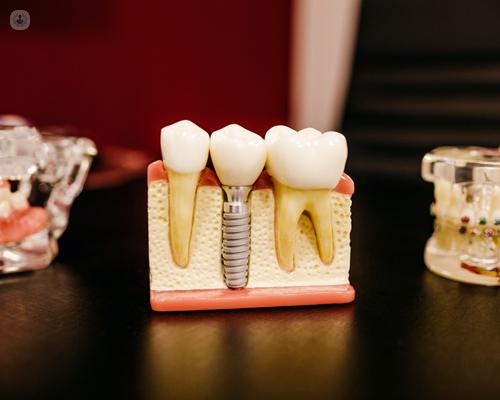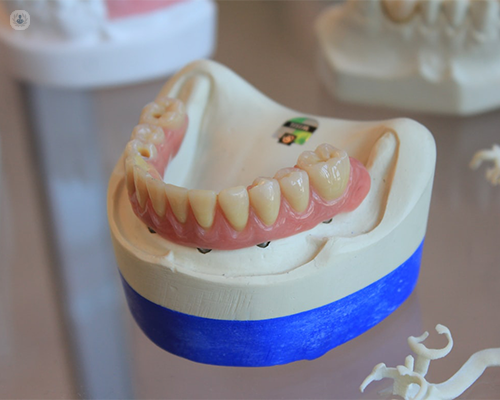Dental bridges: an expert overview
Written by:Choosing the most suitable dental bridge can be a tricky choice for many patients who are seeking the most effective way to replace missing teeth.
In our latest article, highly regarded and experienced London-based prosthodontics specialist, Professor Christian Mehl, provides a detailed overview of the different types of dental bridges available and suggests which ones patients should consider.

Metal vs. full ceramic: Which dental bridge should it be?
Using a dental bridge is a very common way to replace missing teeth. The most common question patients often ask relates to the material: is a porcelain fused to metal bridge (PFM) or an all-ceramic bridge better?
Quality and suitability
High-quality bridges should be made of a stable material and correctly designed to be durable. At the same time, they should have an abrasion-resistant surface, be bio-compatible and look aesthetically pleasing. When handled properly, most dental bridge materials could and should meet these requirements.
Full-metal bridges
Full-metal bridges are stable and inexpensive, but are not capable of matching with natural tooth colour. Due to the poor aesthetic value and the metallic taste when in contact with heat, they are rarely used today. Even bridges fully made of gold are seldom used nowadays.
The gold standard: advantages and disadvantages of the metal-ceramic bridge
Metal-ceramic bridges or porcelain fused to metal bridges consist of a metal framework, which is veneered with ceramic. It has been used in dentistry for over 50 years, and so dentists and dental technicians have a significant amount of experience when it comes to using this material.
Due to the fact that the metal framework is very stable, these restorations are also capable of closing larger gaps. With its tooth-coloured appearance, metal-ceramic bridges are aesthetically pleasing. They are also less thermally conductive than solid cast bridges which aids comfort in the mouth.
However, after five to ten years, the associated gum in contact with the bridge can discolour when metal ions dissolve. In addition, as the gums can recede over the years, the deeper layer could show through or the metal margin could become visible. This can, of course, compromise the aesthetic appearance.
All-ceramic bridges made of lithium-disilicate
For many years, only metal and metal-ceramic bridges were available. Eventually, the search for better dental aesthetics ultimately led to the development of all-ceramic bridges. They look very similar to natural teeth. All-ceramic is also considered to be more biocompatible.
Bridges made of lithium disilicate can last as long as metal-based bridges, but can only be used for single tooth gaps in the frontal and premolar region. Just like normal teeth, they can break when chewing hard food.
High-performance ceramic zirconium dioxide (zirconia)
Today, more and more zirconia bridges are being used. Like lithium-disilicate all-ceramic bridges, they do not contain metals. Zirconium oxide is extremely stable, which is why zirconium oxide ceramics are also used to replace several missing teeth in the posterior region.
However, this extreme stability also leads to some disadvantages, as the opposite tooth can be worn down if the bridge was not sufficiently polished after adjusting the bite. The bridges usually fit seamlessly into the rest of the dentition.
However, the dentist needs to ensure that the ceramic veneering of the zirconium oxide is only applied on the outside. If not, the veneering ceramic will often chip. Compared to other materials, zirconium bridges impress with their high accuracy and material purity.

Which dental bridge is the right one?
We have produced thousands of metal-ceramic and all-ceramic bridges and have researched most materials available today. Here is our recommendation:
- For the replacement of front teeth, a zirconia-based framework veneered for aesthetical perfection is the preferred choice.
- For the replacement of posterior teeth, we would recommend a fully anatomical and colour-glazed zirconia bridge.
Professor Christian Mehl is an exceptionally trusted and esteemed specialist in prosthodontics, and can guide you in the right direction when it comes to dental bridges. Schedule a consultation with him today via his Top Doctors profile.


